
Michael Charles Gauntlet Wilding was an English stage, television, and film actor. He is best known for a series of films he made with Anna Neagle; he also made two films with Alfred Hitchcock, Under Capricorn (1949) and Stage Fright (1950); and he guest starred on Hitchcock's TV show in 1963. He was married four times, including to Elizabeth Taylor, with whom he had two sons.

Scott of the Antarctic is a 1948 British adventure film starring John Mills as Robert Falcon Scott in his ill-fated attempt to reach the South Pole. The film more or less faithfully recreates the events that befell the Terra Nova Expedition in 1912.

Margaret Mary Day Lockwood, CBE, was an English actress. One of Britain's most popular film stars of the 1930s and 1940s, her film appearances included The Lady Vanishes (1938), Night Train to Munich (1940), The Man in Grey (1943), and The Wicked Lady (1945). She was nominated for the BAFTA Award for Best British Actress for the 1955 film Cast a Dark Shadow. She also starred in the television series Justice (1971–74).
Frank Sydney Box was a British film producer and screenwriter, and brother of British film producer Betty Box. In 1940, he founded the documentary film company Verity Films with Jay Lewis.
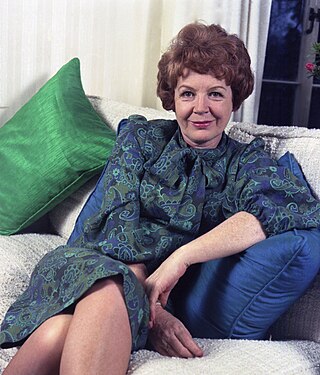
Phyllis Hannah Murray-Hill, known professionally as Phyllis Calvert, was an English film, stage and television actress. She was one of the leading stars of the Gainsborough melodramas of the 1940s such as The Man in Grey (1943) and was one of the most popular movie stars in Britain in the 1940s. She continued her acting career for another 50 years.
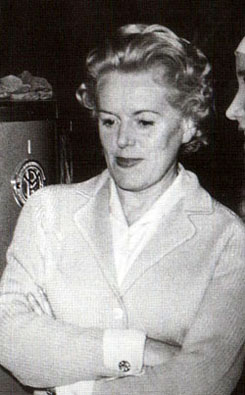
Betty Evelyn Box was a prolific British film producer, usually credited as Betty E. Box.
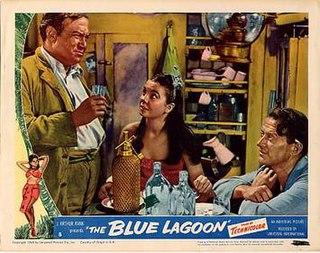
The Blue Lagoon is a 1949 British coming-of-age romance and adventure film directed and co-produced by Frank Launder and starring Jean Simmons and Donald Houston. The screenplay was adapted by John Baines, Michael Hogan, and Frank Launder from the 1908 novel The Blue Lagoon by Henry De Vere Stacpoole. The original music score was composed by Clifton Parker and the cinematography was by Geoffrey Unsworth.
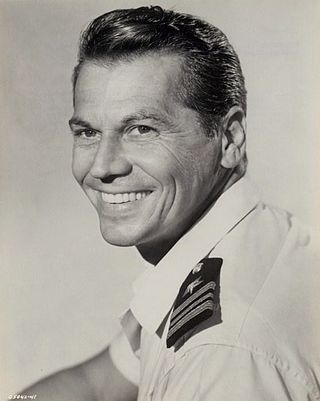
Ronald Egan Randell was an Australian actor. After beginning his acting career on the stage in 1937, he played Charles Kingsford Smith in the film Smithy (1946). He also had roles in Bulldog Drummond at Bay (1947), Kiss Me Kate (1953), I Am a Camera (1955), Most Dangerous Man Alive (1961) and King of Kings (1961).

Eureka Stockade is a 1949 British film of the story surrounding Irish-Australian rebel and politician Peter Lalor and the gold miners' rebellion of 1854 at the Eureka Stockade in Ballarat, Victoria, in the Australian Western genre.

Patricia Roc was an English film actress, popular in the Gainsborough melodramas such as Madonna of the Seven Moons (1945) and The Wicked Lady (1945), though she only made one film in Hollywood, Canyon Passage (1946). She also appeared in Millions Like Us (1943), Jassy (1945), The Brothers (1947) and When the Bough Breaks (1947).

Jassy is a 1947 British colour film historical melodrama set in the early 19th century, based on a novel by Norah Lofts. It is a Gainsborough melodrama, the only one to be made in Technicolor. It was the last "official" Gainsborough melodrama.

The Brothers is a British film melodrama of 1947, starring Patricia Roc, Will Fyffe and Maxwell Reed, from a novel of the same name by L. A. G. Strong.
David MacDonald was a Scottish film director, writer and producer.
The Gainsborough melodramas were a sequence of films produced by the British film studio Gainsborough Pictures between 1943 and 1947 which conformed to a melodramatic style. The melodramas were not a film series but an unrelated sequence of films which had similar themes that were usually developed by the same film crew and frequently recurring actors who played similar characters in each. They were mostly based on popular books by female novelists and they encompassed costume dramas, such as The Man in Grey (1943) and The Wicked Lady (1945), and modern-dress dramas, such as Love Story (1944) and They Were Sisters (1945). The popularity of the films with audiences peaked mid-1940s when cinema audiences consisted primarily of women. The influence of the films led to other British producers releasing similarly themed works, such as The Seventh Veil (1945), Pink String and Sealing Wax (1945), Hungry Hill (1947), The White Unicorn (1947), Idol of Paris (1948), and The Reluctant Widow (1950) and often with the talent that made Gainsborough melodramas successful.

The Bad Lord Byron is a 1949 British historical drama film about the life of Lord Byron. It was directed by David MacDonald and starred Dennis Price as Byron with Mai Zetterling, Linden Travers and Joan Greenwood.
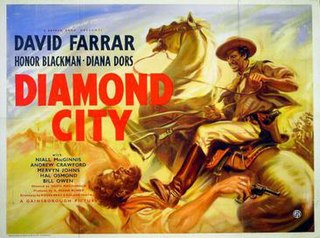
Diamond City is a 1949 British drama film directed by David MacDonald and starring David Farrar, Honor Blackman, Diana Dors and Niall MacGinnis.

Daybreak is a 1948 drama by Riverside Studios – classified by some as 'British Noir' – directed by Compton Bennett and starring Eric Portman, Ann Todd and Maxwell Reed. It is based on a play by Monckton Hoffe.
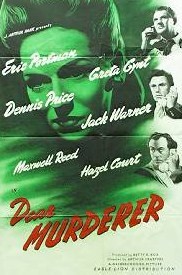
Dear Murderer is a 1947 British film noir crime, drama, thriller, directed by Arthur Crabtree for Gainsborough Pictures, and starring Eric Portman and Greta Gynt.
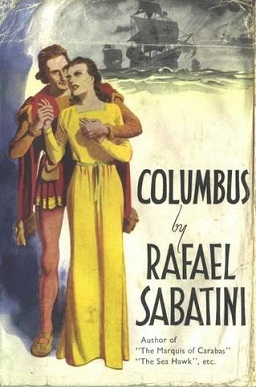
Columbus is a romantic adventure novel by the British writer Rafael Sabatini which was first published in 1941. It depicts the life of Christopher Columbus at the Spanish court, his voyages across the Atlantic Ocean in which he discovered the Americas and his relationship with the mother of his second son Beatriz Enríquez de Arana, whom he never married.

A Boy, a Girl and a Bike is a 1949 British romantic comedy film directed by Ralph Smart and starring John McCallum, Honor Blackman and Patrick Holt. The film's art direction was by George Provis. The film concerns the romantic escapades and adventures of a Yorkshire cycling club.

















